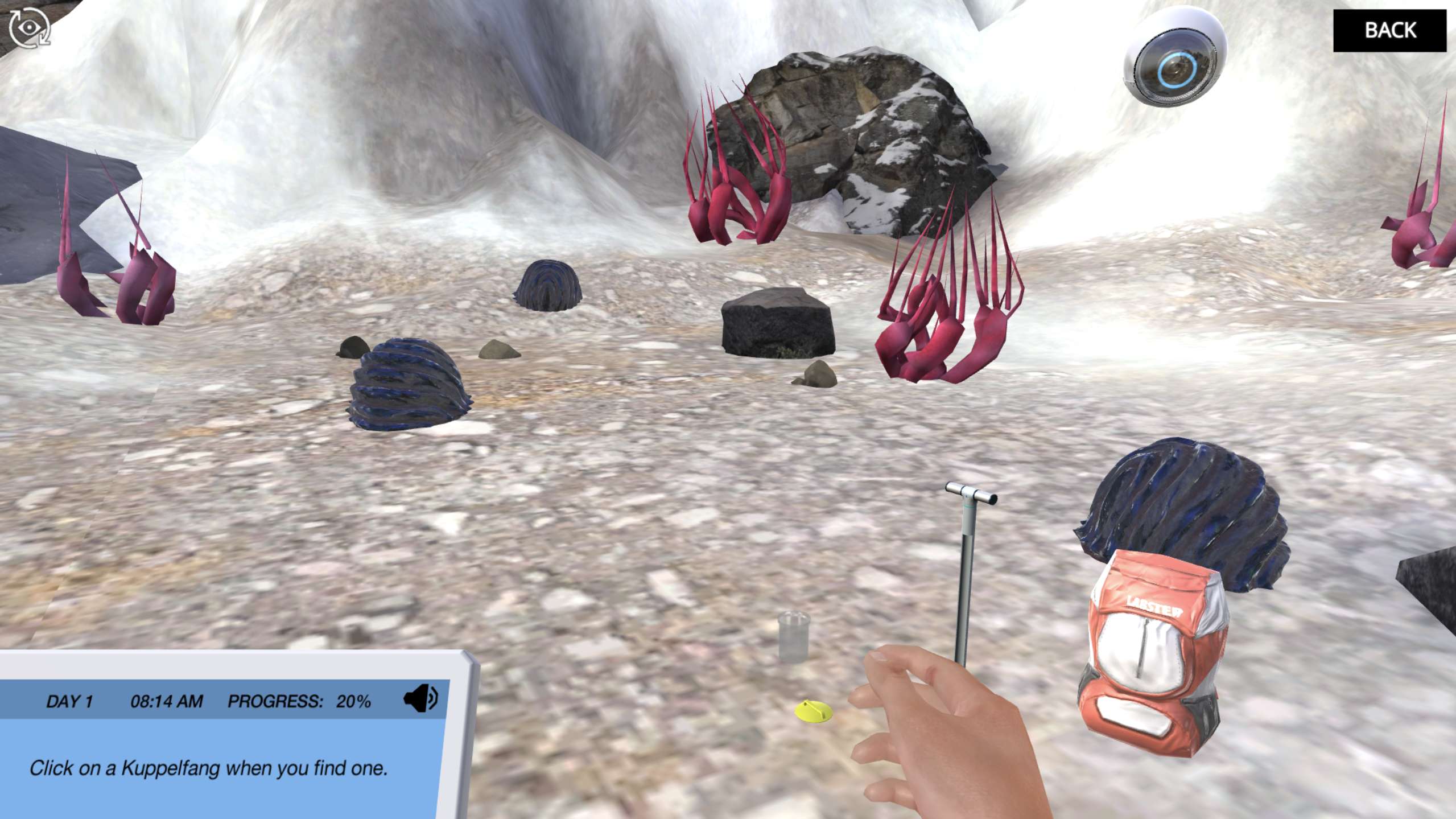Heading 1
Heading 2
Heading 3
Heading 4
Heading 5
Heading 6
Lorem ipsum dolor sit amet, consectetur adipiscing elit, sed do eiusmod tempor incididunt ut labore et dolore magna aliqua. Ut enim ad minim veniam, quis nostrud exercitation ullamco laboris nisi ut aliquip ex ea commodo consequat. Duis aute irure dolor in reprehenderit in voluptate velit esse cillum dolore eu fugiat nulla pariatur.
Block quote
Ordered list
- Item 1
- Item 2
- Item 3
Unordered list
- Item A
- Item B
- Item C
Bold text
Emphasis
Superscript
Subscript
About This Simulation
Investigate why the Kuppelfangs died when transplanted to the new Astakos IV biodome on Earth. Quantify their realized and fundamental niche, and explore how acclimation affects the boundaries of a niche.
Learning Objectives
- Quantify a species realized niche
- Set up an experiment to compare the effect of simple variables on a species niche
- Experimentally determine a species fundamental niche
- Visualize niches using an n-dimensional hypervolume
- Measure the extent to which acclimation expands a species’ niche
- Determine how trade-offs affect the boundaries of a niche
About This Simulation
Lab Techniques
- Biometrics
- Field sampling
- HPLC
- Data analysis of n-dimensional hypervolumes
Related Standards
- Out of scope
- No direct alignment
- Biology C.1 Species and communities
Learn More About This Simulation
What if you could have your own cute little alien to pet? How would you know the requirements to keep it alive? In this simulation, you will learn to identify the fundamental niche of any species using Kuppelfangs as an example. This rock-digesting species from Astakos IV couldn’t survive when it was transplanted to a biodome on Earth. You will perform different experiments to understand what caused Kuppelfangs to die in the biodome and ultimately suggest a solution that will enable the species to survive on Earth.
Explore Astakos IV to collect data on a Kuppelfang’s fundamental niche
You will visit the three main regions where Kuppelfangs live on Astakos IV and collect soil samples that will provide information about their realized ecological niche. You will analyze three main variables that affect the survival of Kuppelfangs: temperature, soil pH and soil silicon concentration.
Learn to use n-dimensional hypervolumes and design your own experimental setup
After your field trip, you will measure the pH of the soil samples and determine its silicon concentration using HPLC. You will then plot and visualize your results in a 3-dimensional graph in order to compare the Kuppelfangs’ fundamental and realized niches with the niche found inside Earth’s biodome. After discovering the fundamental niche of Kuppelfangs, you will design an experiment using the three variables you have already measured and let baby Kuppelfangs grow in a greenhouse for one year. Following this step, the simulation will fast forward time so that you can see whether the Kuppelfangs survived in each environment. You will then take some individuals to the lab so that you can measure how certain physical features are related to specific environmental conditions.
Decide the best conditions for the Kuppelfangs’ survival on Earth
At the end of the experiment, you will determine how acclimation can expand and affect the boundaries of a niche. Will you be able to determine why the first Kuppelfangs sent to Earth’s biodome died? Can knowledge of their fundamental niche help you to develop a solution to ensure the Kuppelfangs’ survival in Earth’s biodome?
For Science Programs Providing a Learning Advantage
Boost STEM Pass Rates
Boost Learning with Fun
75% of students show high engagement and improved grades with Labster
Discover Simulations That Match Your Syllabus
Easily bolster your learning objectives with relevant, interactive content
Place Students in the Shoes of Real Scientists
Practice a lab procedure or visualize theory through narrative-driven scenarios


FAQs
Find answers to frequently asked questions.
Heading 1
Heading 2
Heading 3
Heading 4
Heading 5
Heading 6
Lorem ipsum dolor sit amet, consectetur adipiscing elit, sed do eiusmod tempor incididunt ut labore et dolore magna aliqua. Ut enim ad minim veniam, quis nostrud exercitation ullamco laboris nisi ut aliquip ex ea commodo consequat. Duis aute irure dolor in reprehenderit in voluptate velit esse cillum dolore eu fugiat nulla pariatur.
Block quote
Ordered list
- Item 1
- Item 2
- Item 3
Unordered list
- Item A
- Item B
- Item C
Bold text
Emphasis
Superscript
Subscript
A Labster virtual lab is an interactive, multimedia assignment that students access right from their computers. Many Labster virtual labs prepare students for success in college by introducing foundational knowledge using multimedia visualizations that make it easier to understand complex concepts. Other Labster virtual labs prepare learners for careers in STEM labs by giving them realistic practice on lab techniques and procedures.
Labster’s virtual lab simulations are created by scientists and designed to maximize engagement and interactivity. Unlike watching a video or reading a textbook, Labster virtual labs are interactive. To make progress, students must think critically and solve a real-world problem. We believe that learning by doing makes STEM stick.
Yes, Labster is compatible with all major LMS (Learning Management Systems) including Blackboard, Canvas, D2L, Moodle, and many others. Students can access Labster like any other assignment. If your institution does not choose an LMS integration, students will log into Labster’s Course Manager once they have an account created. Your institution will decide which is the best access method.
Labster is available for purchase by instructors, faculty, and administrators at education institutions. Purchasing our starter package, Labster Explorer, can be done using a credit card if you are located in the USA, Canada, or Mexico. If you are outside of North America or are choosing a higher plan, please speak with a Labster sales representative. Compare plans.
Labster supports a wide range of STEM courses at the high school, college, and university level across fields in biology, chemistry, physics, and health sciences. You can identify topics for your courses by searching our Content Catalog.















